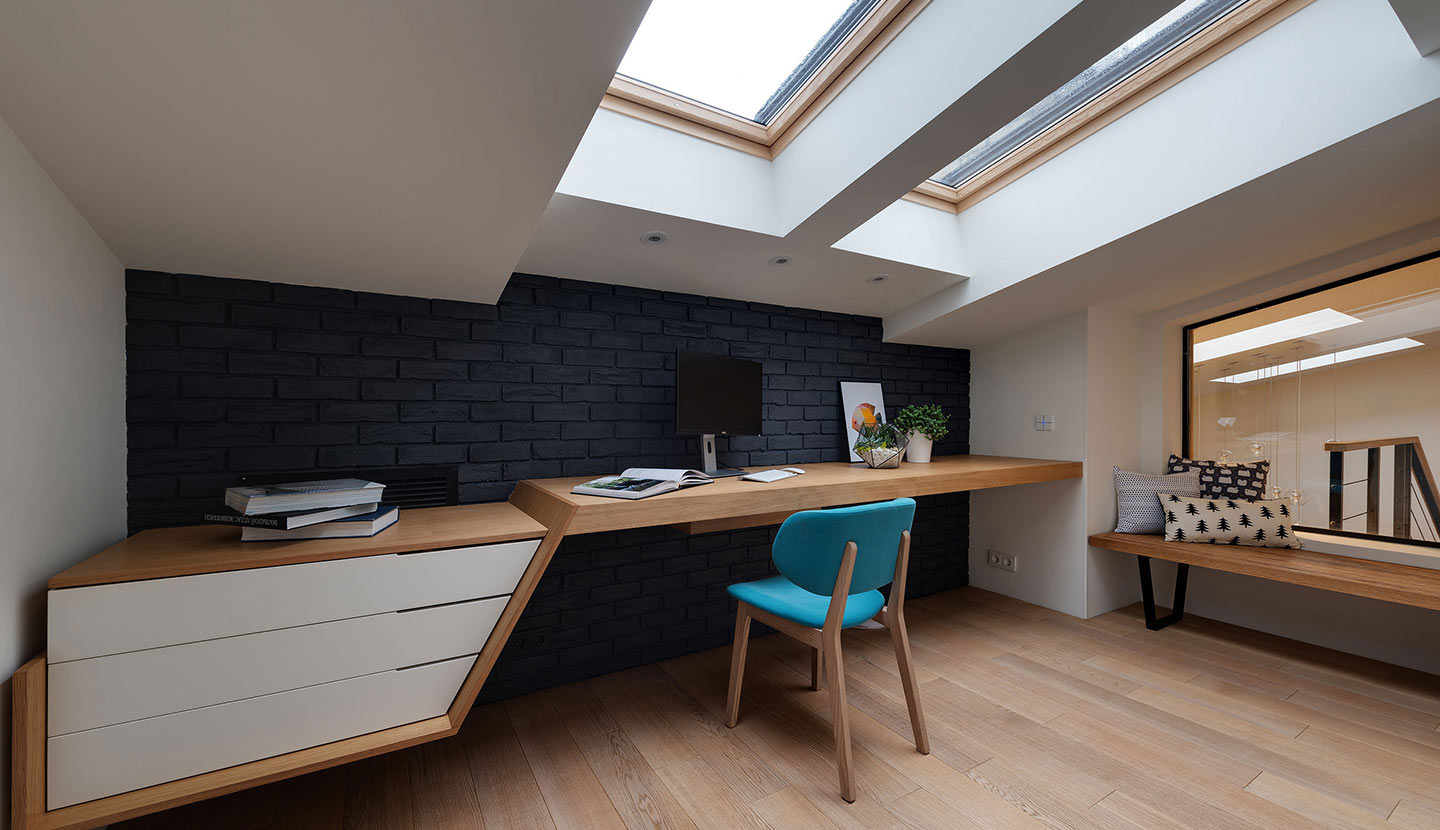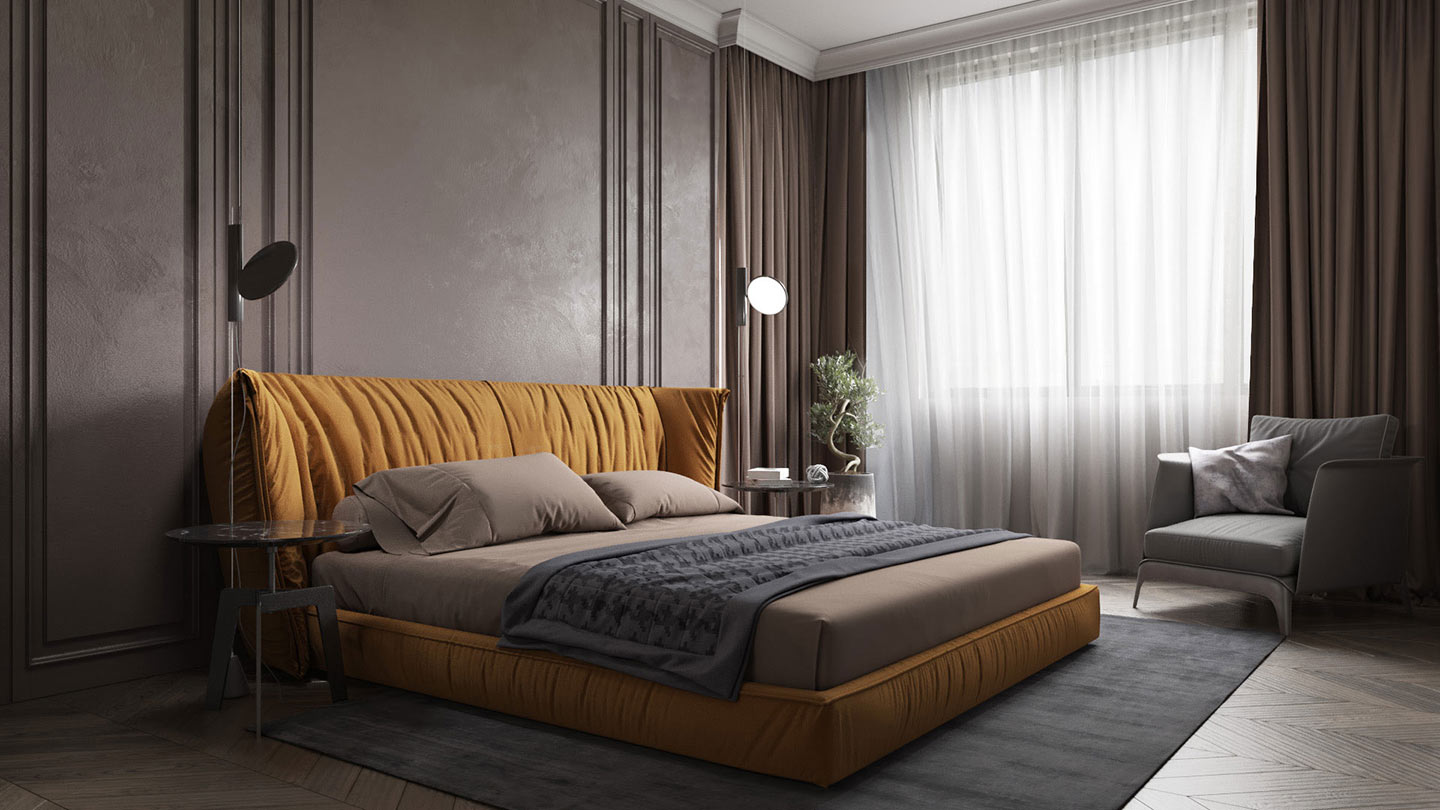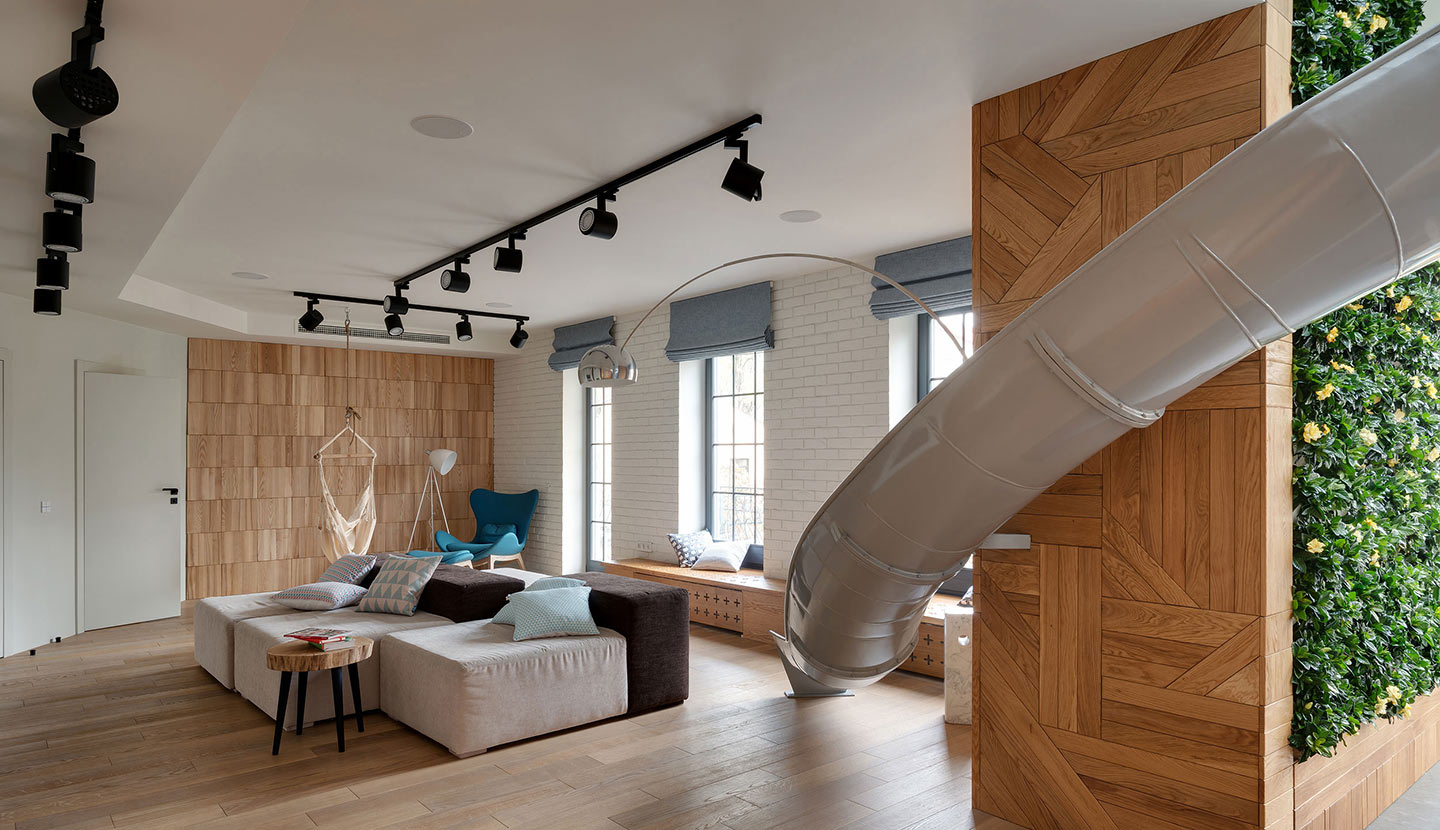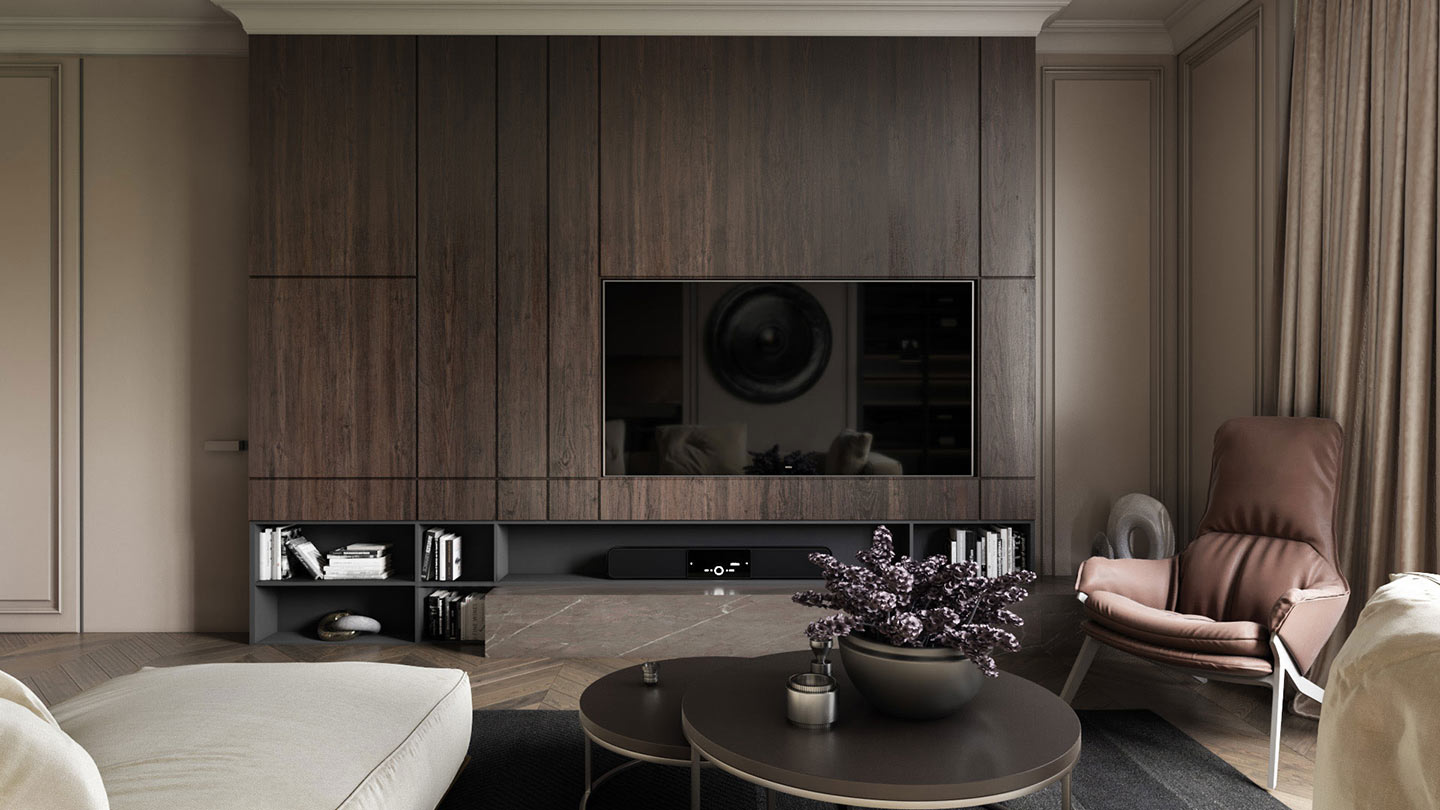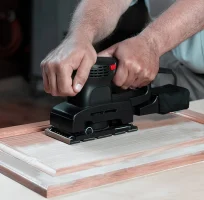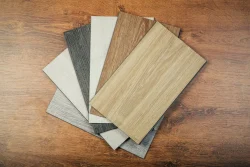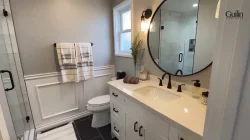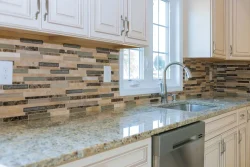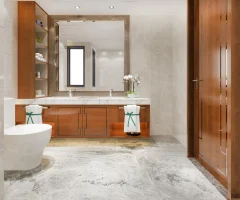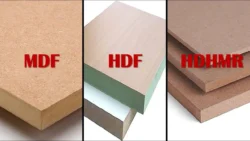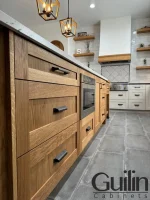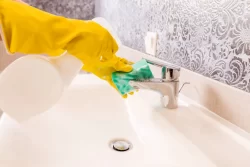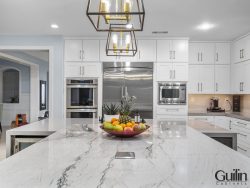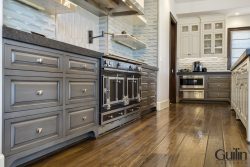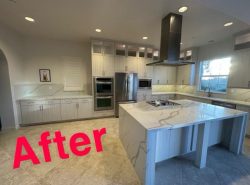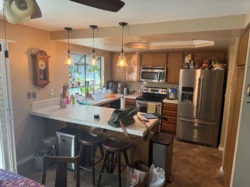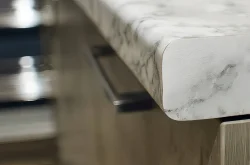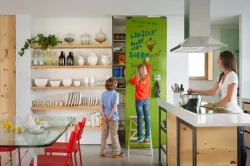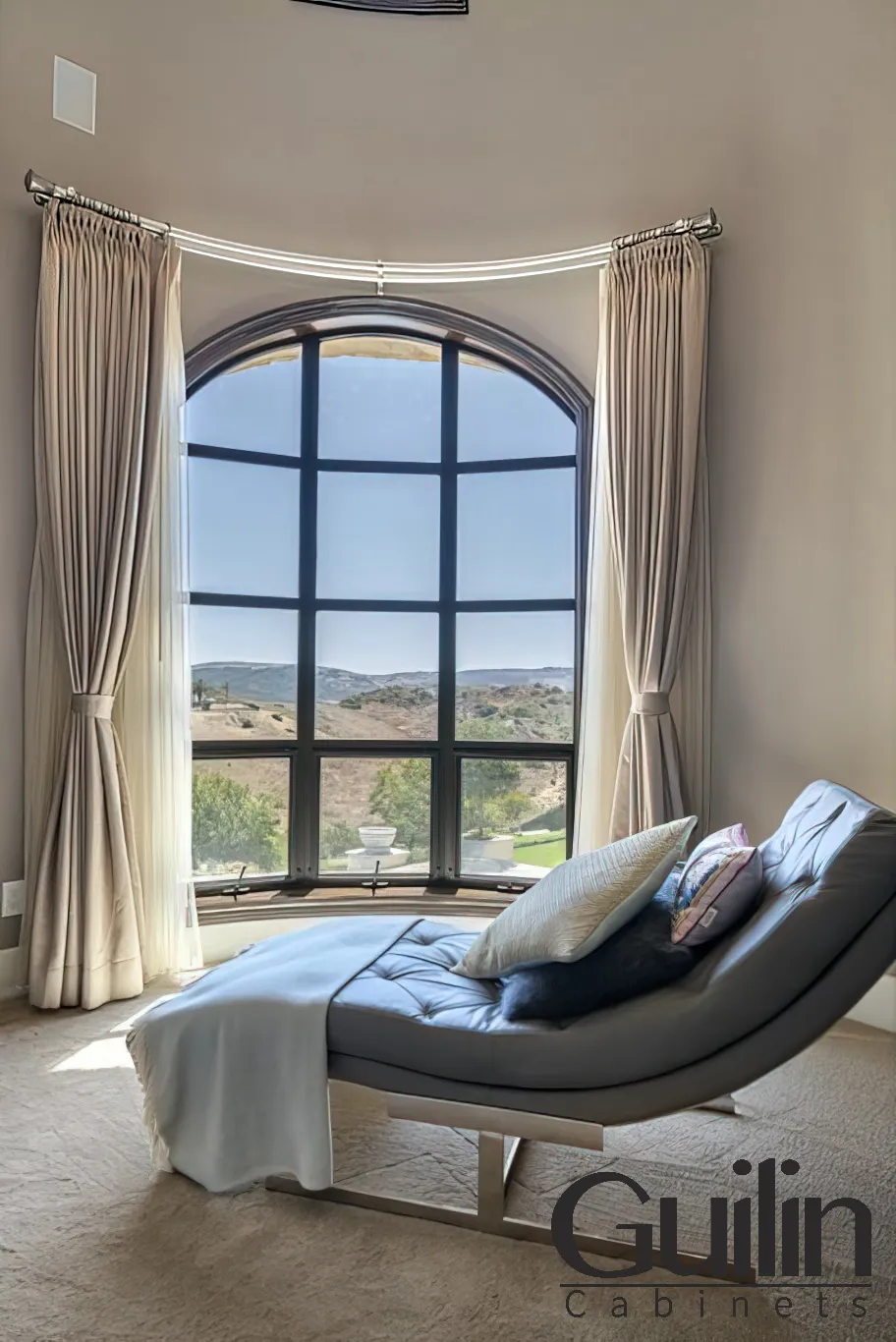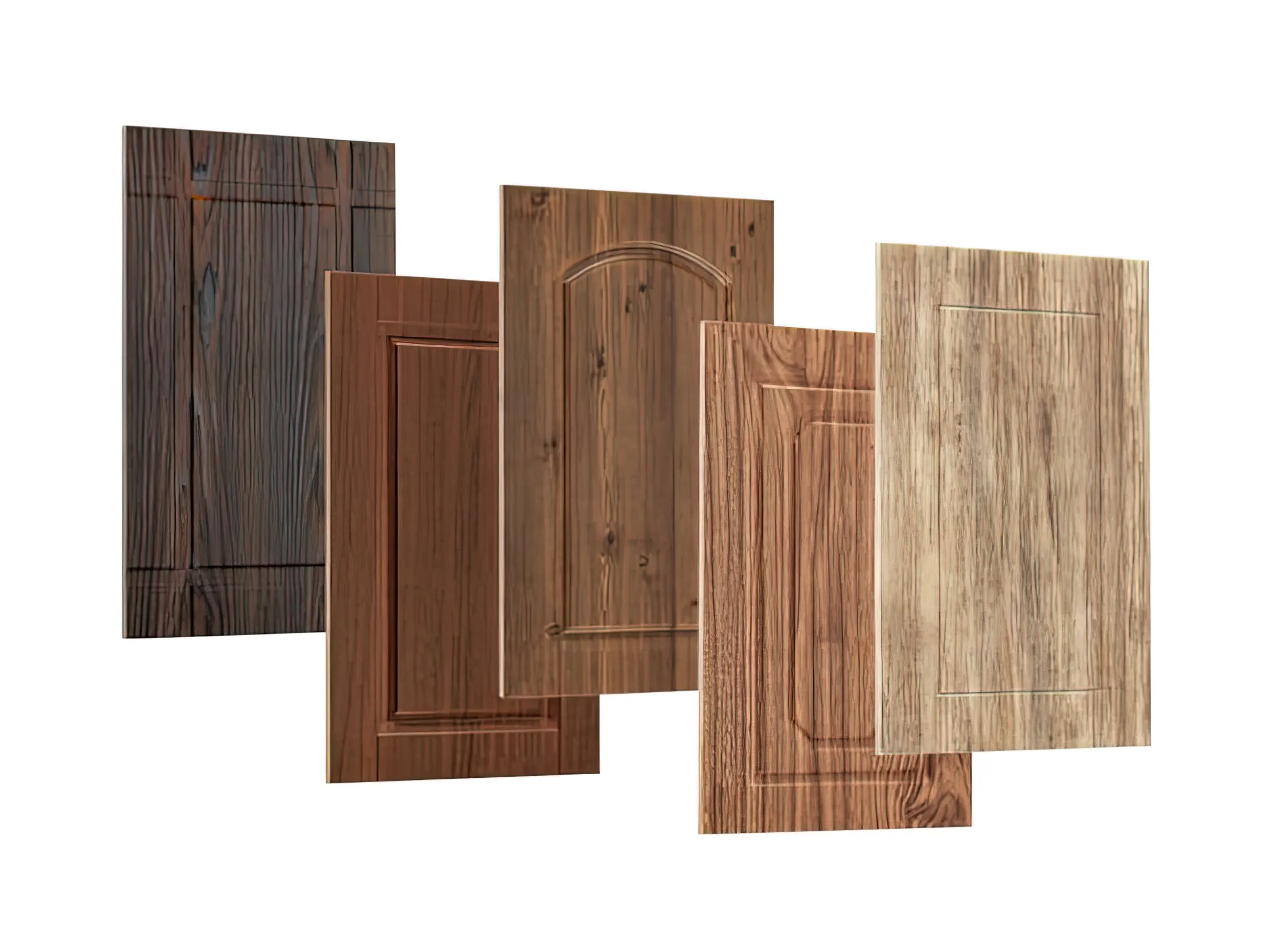
Are you looking for a budget-friendly option to enhance the look and feel of your kitchen or bathroom? Then thermofoil wood cabinets might just be the answer you’ve been searching for! As a homeowner or renovator, it’s essential to weigh up the pros and cons of every design decision made, so you don’t end up with costly mistakes. Thermofoil wood cabinets are a popular choice for modern interiors and can provide an impeccable finish at an affordable price. However, as with any home renovation project, there are both benefits and drawbacks to consider. In this blog post, we’ll take a closer look at the pros and cons of thermofoil cabinets, so you can make an informed decision and achieve your dream design without spending too much time.
=> Related Articles: 10 Best Cabinet Materials: How To Choose Right!
- Solid Wood Cabinets: Pros and Cons to Consider
- Plywood Cabinets: Pros and Cons to Consider
- Particleboard Cabinets: Pros and Cons to Consider
- Melamine Cabinets: Pros and Cons to Consider
- Thermofoil Wood Cabinets: Pros and Cons
What is a Thermofoil Wood Cabinet
Thermofoil cabinets, also known as thermofoil, are made of PVC vinyl that is fused to MDF doors using heat and vacuum pressure. A smooth surface and an eye-catching look that rivals painted cabinets are produced by the thermofoil method.
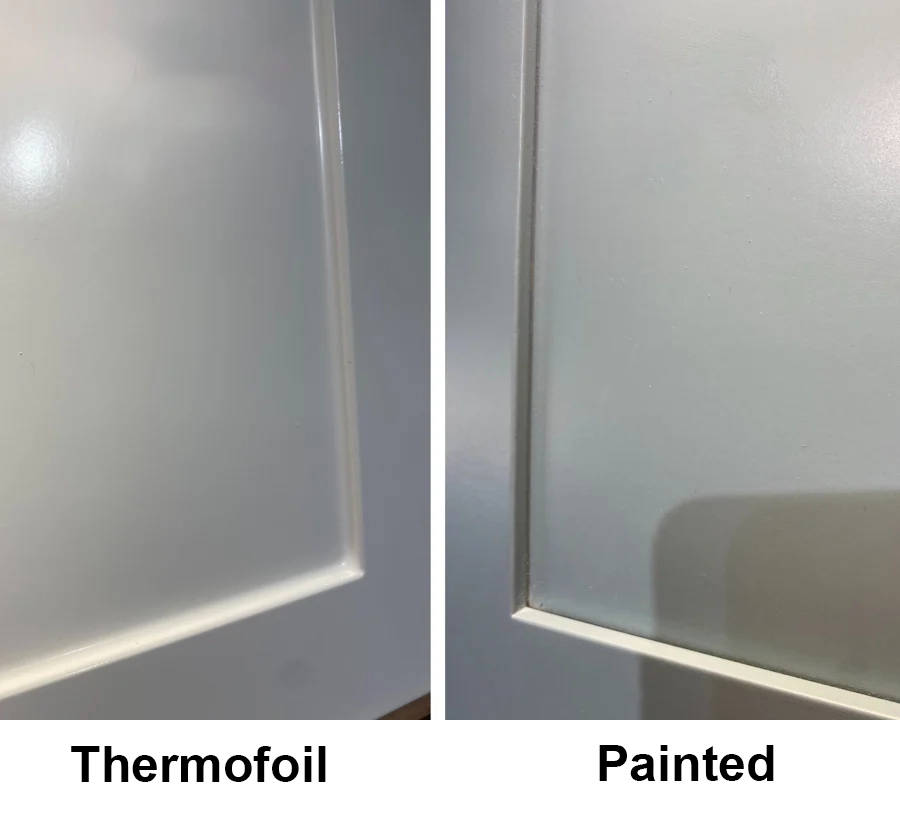
Thermofoil isn’t applied directly to the wood. Instead, it’s applied to a medium-density fiberboard (MDF) surface, which is a man-made product created with wood fibers, wax, and resin. Manufacturers press all these components together to produce a wood-like material that mimics the look of natural wood and plywood.
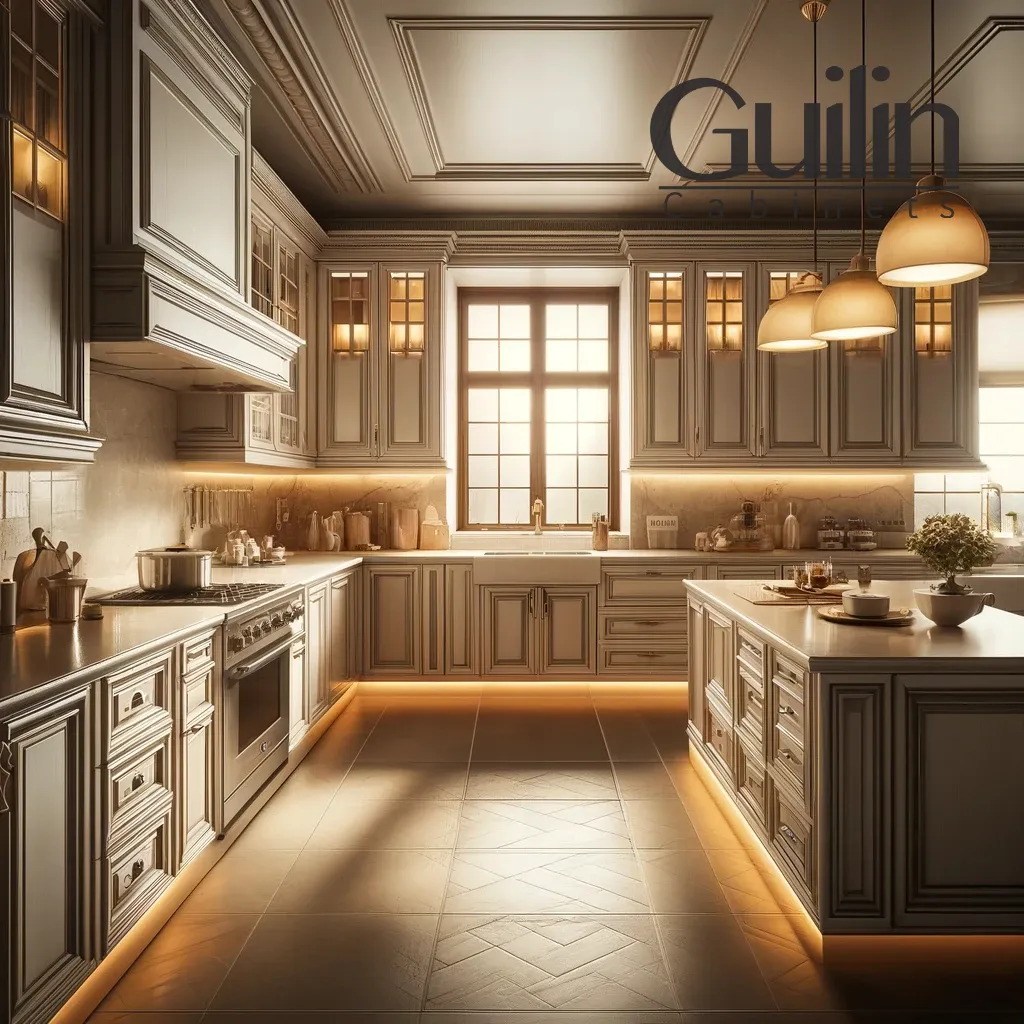
Thermofoil is loved for its durability and resistance to scratches and fingerprints. Although often confused with laminate and melamine cabinet surfaces, Thermofoil is hot-pressed onto the cabinet surface, while wood Veneer is glued. Both materials make cleaning a breeze, but Thermofoil cabinets tend to be cheaper and long-lasting. If you’re on a budget and want to spruce up your kitchen or bathroom, Thermofoil cabinets are a fantastic option to consider.
=> Read more: Thermofoil vs Laminate vs Melamine: What Different

How to Thermofoil Wood Made:
In this process, MDF cabinet pieces are placed onto a flat tray and fed into a large machine, where a thin and flexible layer of foil-like material is heated and then vacuum-sealed onto the surface. The beauty of Thermofoil is that it offers a huge selection of colors and patterns, from faux wood grains to solid colors and more. Despite these limitations, Thermofoil can still be used on slightly more complex designs like shaker doors or simple arches, so you don’t need to be limited to simple flat panel doors.

Overview of Thermofoil Cabinet Pros and Cons
One of the most significant advantages of thermofoil cabinets is their affordability and ease of installation. However, like any other material, they also have their drawbacks. Here’s a breakdown of the pros and cons of thermofoil cabinets:
The Pros of Thermofoil Wood Cabinets – Advantages
- Cost-effective: Thermofoil cabinets are typically less expensive than other materials such as solid wood. Thermofoil cabinets are a great option if you’re on a tight budget.
- Easy to maintain: Thermofoil cabinets are easy to clean with mild soap and water. They can be wiped down with a damp cloth and dried with a dry towel, making it more manageable to keep clean and shiny.
- Resistant to moisture: Thermofoil cabinets are resistant to moisture, an excellent feature for a room that is prone to moisture like the kitchen or bathroom. The vinyl layer protects the cabinet from water damage or warping and provides an extra layer of protection.
- Heat-resistant: Thermofoil cabinets have a layer of vinyl film that makes them heat-resistant. You don’t have to worry about accidental spills, the plastic film will protect the MDF from damage.
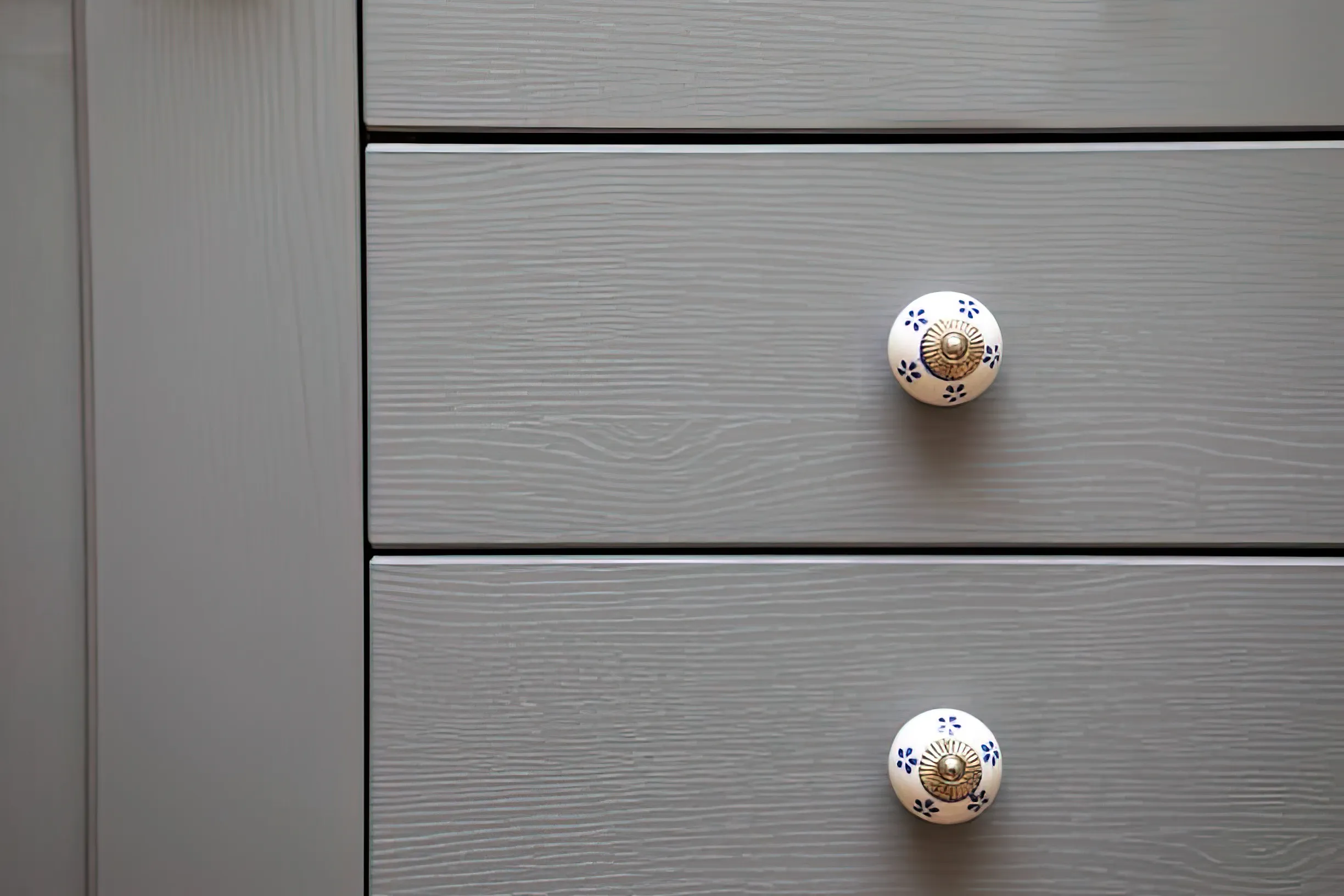
Cost Effectiveness
Pros of thermofoil cabinets include their affordability and ease of installation. You can give your kitchen a trendy minimalist look without breaking the bank. Stock thermofoil cabinets, which are sold with little to no customization options, can be found for less than $100 per linear foot. And Semi-custom thermofoil cabinets will run you a little higher, but they’re still a cost-effective option compared to wood or other materials. and custom cabinets can be had for around $350 per linear foot. Compare this to custom hardwood cabinets, which will set you back at least $500 per linear foot.
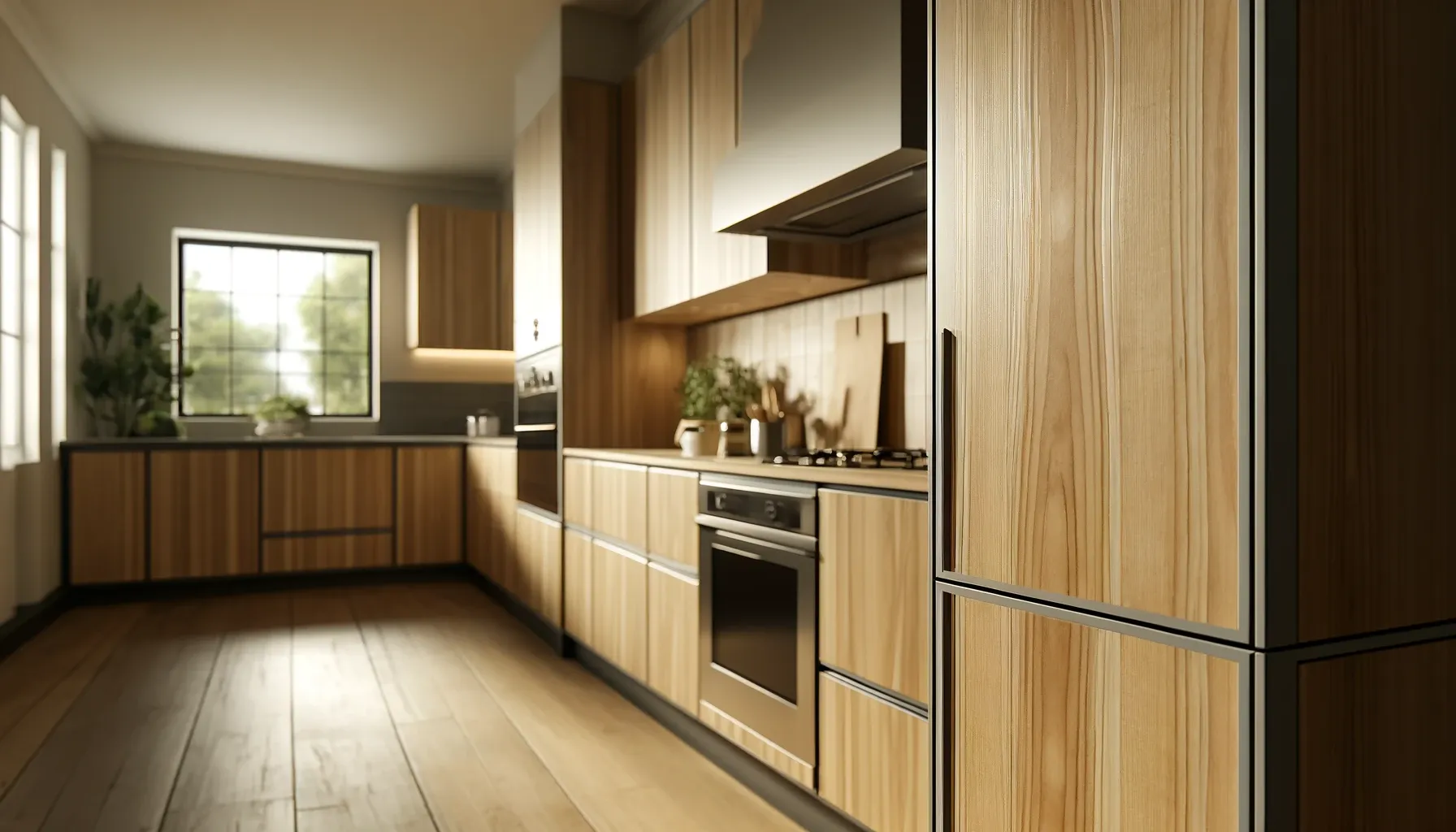
| Type of Cabinet | Cost per Linear Foot |
|---|
| Stock Thermofoil Cabinets | Less than $100 |
| Custom Thermofoil Cabinets | Around $350 |
| Custom Hardwood Cabinets | At least $500 |
Thermofoil cabinets are also widely available at most home improvement stores, making them easy to find and purchase. This convenience factor is a significant advantage for homeowners who want to get their kitchen renovation project started quickly. Additionally, thermofoil cabinets are often pre-assembled, which makes installation a breeze. This can save you time and money on labor costs, as you won’t need to hire a professional to assemble the cabinets on-site.
Variety of Finishes and Colors
Colors and finishes are another significant advantage of Thermofoil cabinets. You can choose from a vast array of options, ranging from glossy whites to rich wood tones, enabling you to customize your space to reflect your personal style. The versatility in design allows you to create a contemporary look or a warmer, traditional ambiance depending on your overall design goals.
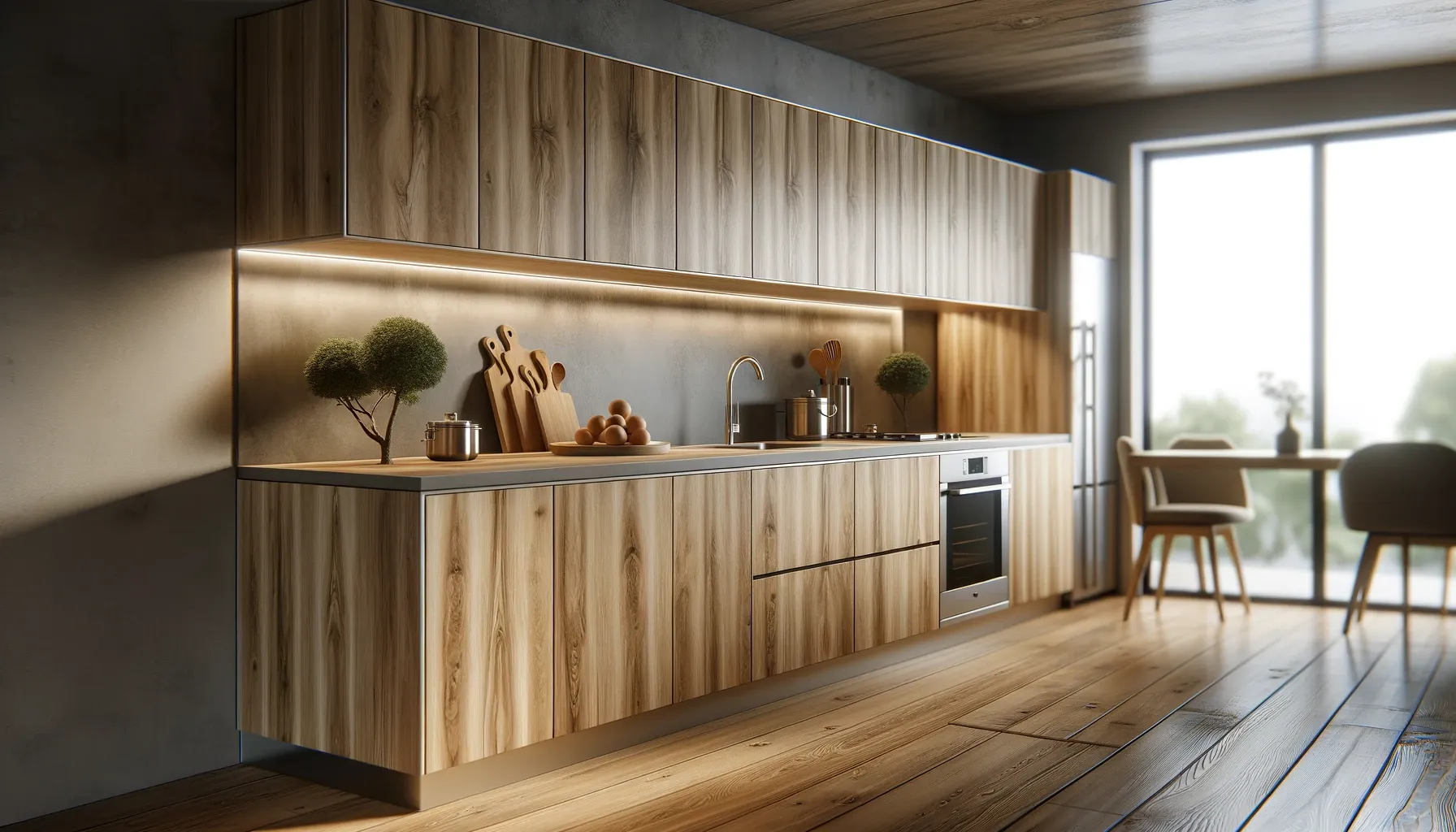
Ease of Maintenance
Ease of maintenance is a standout feature of Thermofoil cabinets. They are non-porous, which makes them resistant to stains and easy to wipe clean. With just a soft cloth and mild soap, you can keep your cabinets looking pristine without the need for harsh cleaning materials. This quality is particularly beneficial in busy kitchens where spills and messes can occur frequently.
Resistance to Moisture and Stains
Variety also plays a pivotal role in the resistance properties of Thermofoil cabinets. Thanks to the sealed edges of the material, they repel water better than traditional wood cabinetry. As a result, you can install these cabinets in areas like bathrooms and kitchens without fear of warping or damage over time.
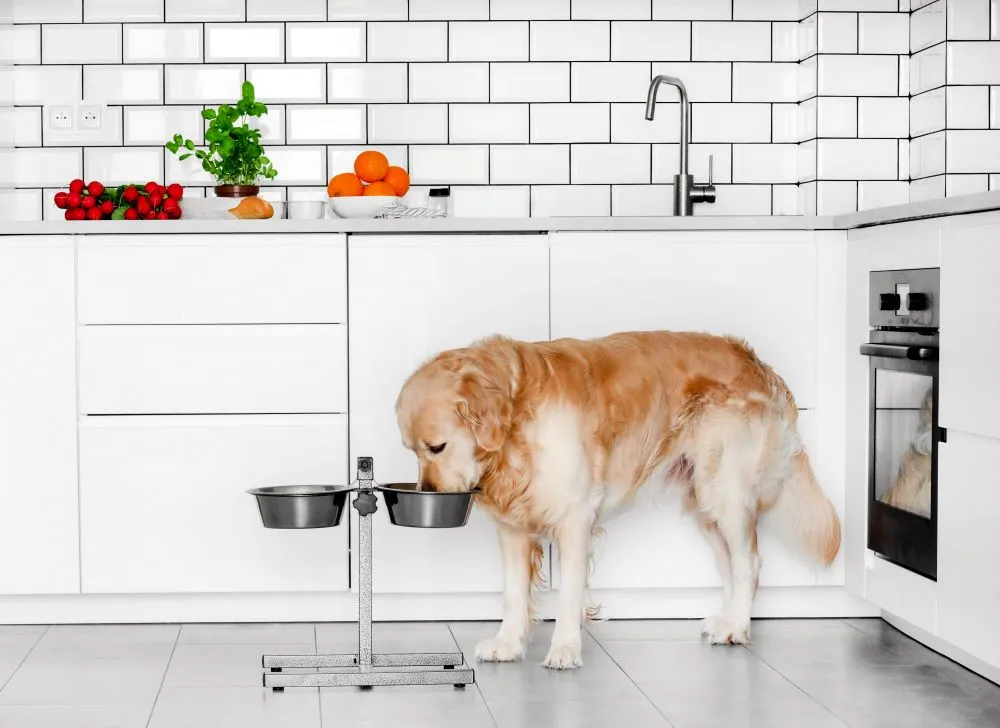
This resistance to moisture also extends to handling everyday stains. The smooth surface of Thermofoil allows you to tackle spills and splatters with ease, preventing lasting marks or discoloration that can often be challenging to remove from other materials.
Lightweight and Easy to Install
Cabinets constructed from Thermofoil are notably lightweight, which means you’ll spend less time and effort during installation. You or your contractors can easily handle and maneuver the panels, reducing the risk of injury while working on your renovation. This feature can be particularly beneficial for DIY enthusiasts who want to take on the challenge themselves.
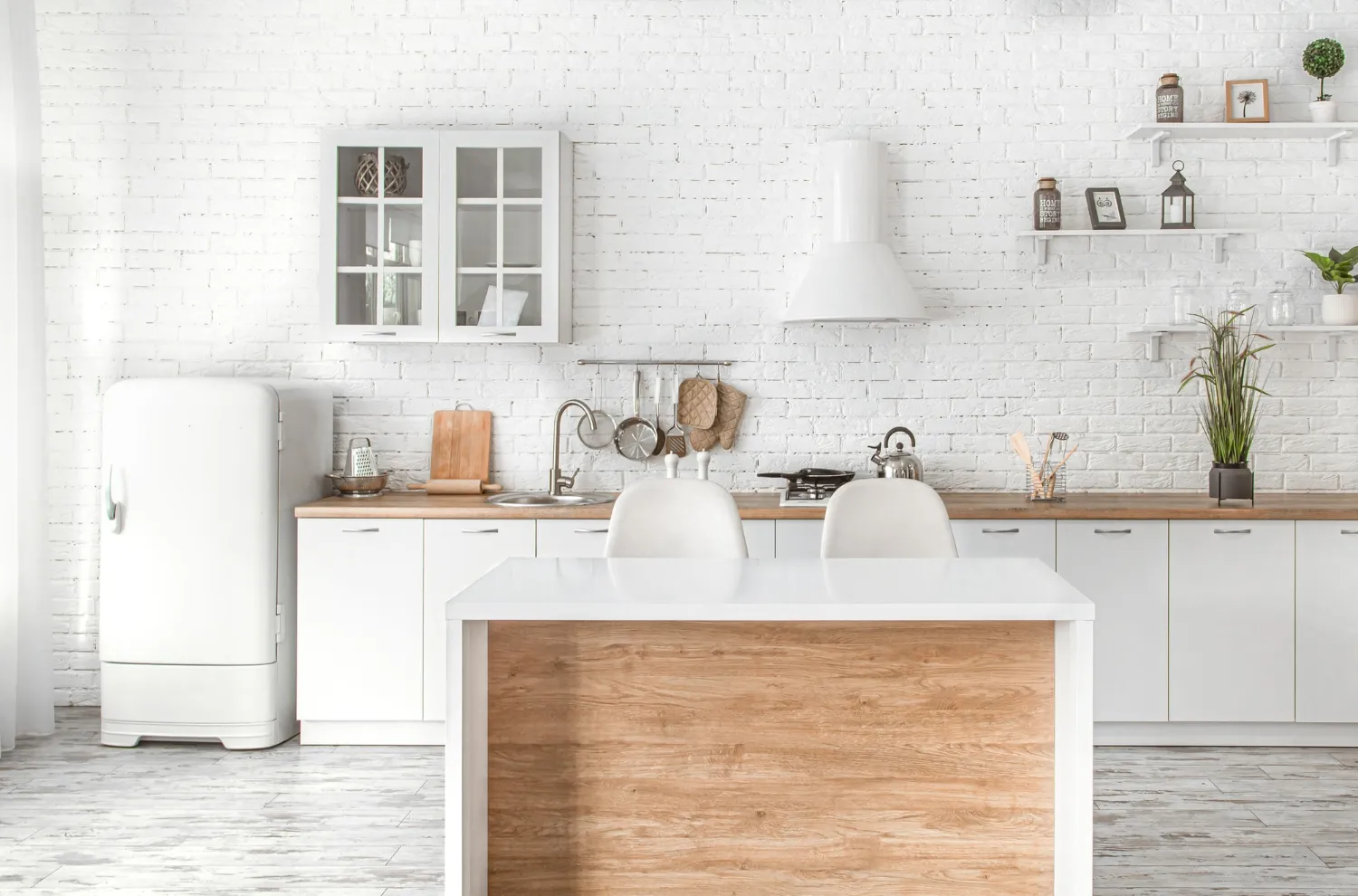
Moreover, the lightweight construction does not compromise structural integrity, ensuring your cabinets remain sturdy and durable once installed. This balance of ease and reliability makes Thermofoil cabinets a fantastic choice for various projects.
The Cons of Thermofoil Wood Cabinets – Disadvantages
- Can’t handle repair: Thermofoil cabinetry can’t be repaired or refinished. If the vinyl layer is damaged, the entire cabinet will need to be replaced.
- Not as customizable: Thermofoil cabinets come in a set range of colors and styles to choose from. It limits the customization options compared to other cabinetry options.
- Susceptible to peeling: If the space is frequently damp, the thermofoil might peel, which will look unsightly, and the cabinet will need to be replaced.
- Difficult to replace a single piece: It is challenging to replace one thermofoil cabinet as each style has its texture and pattern, and getting an exact match for a particular piece can be challenging.
- Vulnerable to Heat Damage: Thermofoil cabinets are a popular choice for many homeowners due to their affordability and stylish appearance. However, one of the biggest drawbacks of these cabinets is their susceptibility to heat damage. Unlike other cabinet materials, thermofoil surfaces can easily be damaged when exposed to extremely high heat.
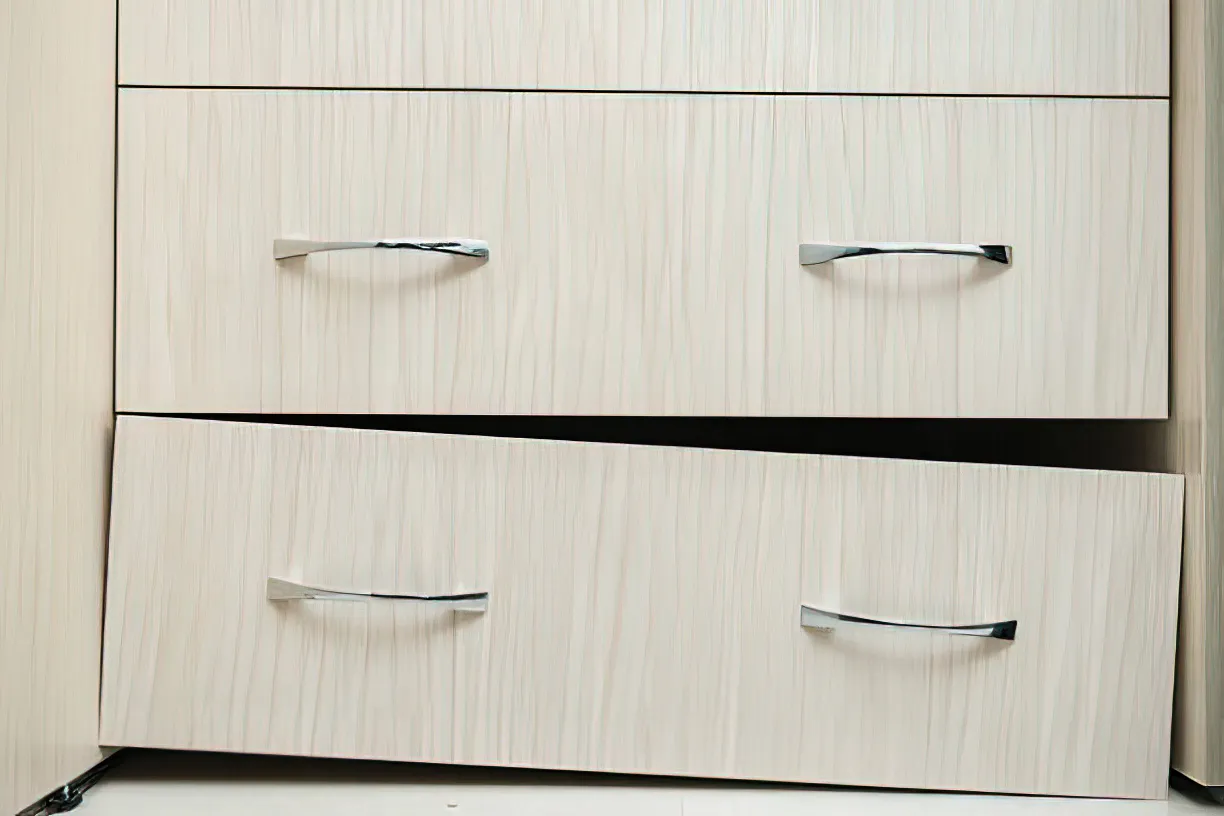
Vulnerability to Heat and Scratches
Heat can be a significant concern for thermofoil cabinets, particularly if they are installed near ovens or stovetops. Unlike solid wood or laminate cabinets that can withstand higher temperatures, thermofoil is made from a layer of vinyl that can warp or degloss when exposed to excess heat. This means that if you frequently use your kitchen and find yourself cooking with high temperatures, you might notice deterioration in the cabinet surfaces over time.

Additionally, scratches can easily undermine the aesthetic appeal of your thermofoil cabinets. The vinyl surface, while easy to clean, is more susceptible to scratches than traditional wood finishes. You may find that everyday kitchen activities such as moving pots and pans can lead to visible wear and tear, diminishing the overall look of your cabinetry.
Limitations in Repairability
Restrictions on repairability can be quite difficult for homeowners. Because thermofoil cannot be readily refinished or sanded down like wood, repairs in the case of damage, such as scratches or peeling, are frequently challenging. Alternatively, it could be necessary to replace the door or drawer front entirely in order to restore the look, which can be expensive and time-consuming.
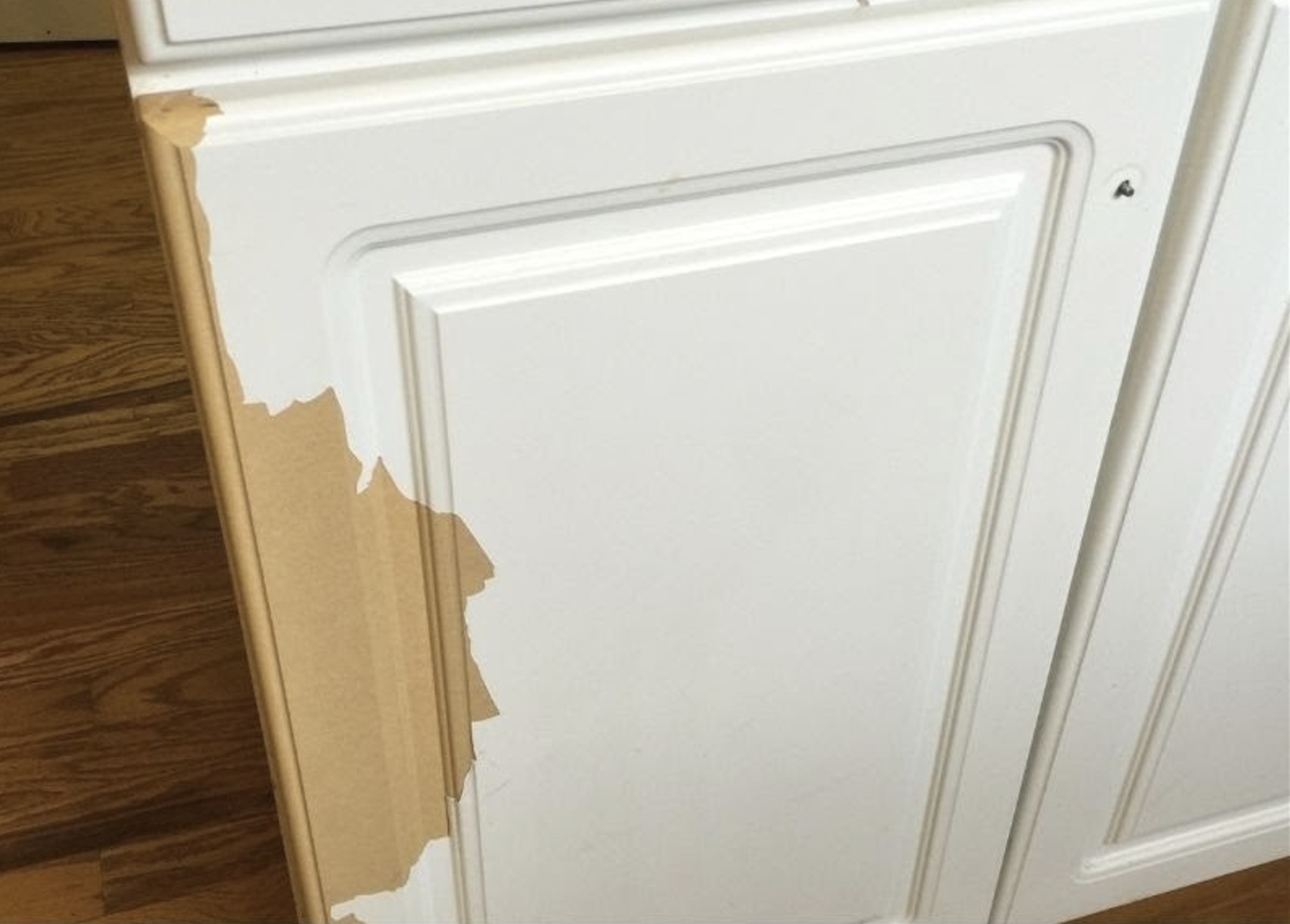
You will also need to take extra care while keeping your thermofoil cabinets because there are no possibilities for repairs. To determine if being unable to properly repair your cabinets will be a long-term issue, you need carefully assess the amount of everyday wear and tear that happens in your kitchen.
Over time, Less Resale Value
Peeling and delaminating can also affect your cabinet’s resale value over time. As potential buyers come through your home, they will look for well-maintained and durable fixtures, and any signs of wear on your thermofoil cabinets may serve as a red flag. This could mean that the overall value of your kitchen—and home—could diminish because of issues that can arise with these cabinets.
Your choice of cabinetry can impact your long-term investment, so it’s worth assessing whether the initial savings from thermofoil cabinets will offset the potential decrease in value later on. Taking the time to explore different materials might result in a better return if you plan to sell in the future.
Comparing Thermofoil Cabinets to Other Materials
Once again, it’s beneficial to assess how thermofoil cabinets stand up against other popular options in the world of cabinetry. Below is a comparison table that highlights the main advantages and disadvantages of thermofoil cabinets compared to solid wood, laminate, and acrylic materials.
| Material | Pros & Cons |
|---|---|
| Thermofoil | Pros: Affordable, low-maintenance, variety of designs. Cons: Less durable than solid wood, can peel or delaminate over time. |
| Solid Wood | Pros: Durable, can be refinished, timeless appeal. Cons: Expensive, susceptible to moisture and warping. |
| Laminate | Pros: Cost-effective, variety of colors and patterns, resistant to stains. Cons: Can chip or scratch, less authenticity compared to wood. |
| Acrylic | Pros: Sleek and modern look, high gloss finish, resistant to UV rays. Cons: Prone to scratches, more expensive than thermofoil. |
Thermofoil vs. Solid Wood
Any time you’re deciding between thermofoil and solid wood, it’s imperative to consider your budget and the desired aesthetic. Solid wood offers a classic and durable option that can withstand the test of time, making it an excellent choice for those seeking longevity in their cabinetry. However, solid wood comes with a higher price tag and can be sensitive to changes in moisture, which may lead to warping or splitting.
=> Related Article: Solid Wood Cabinets: Pros and Cons to Consider
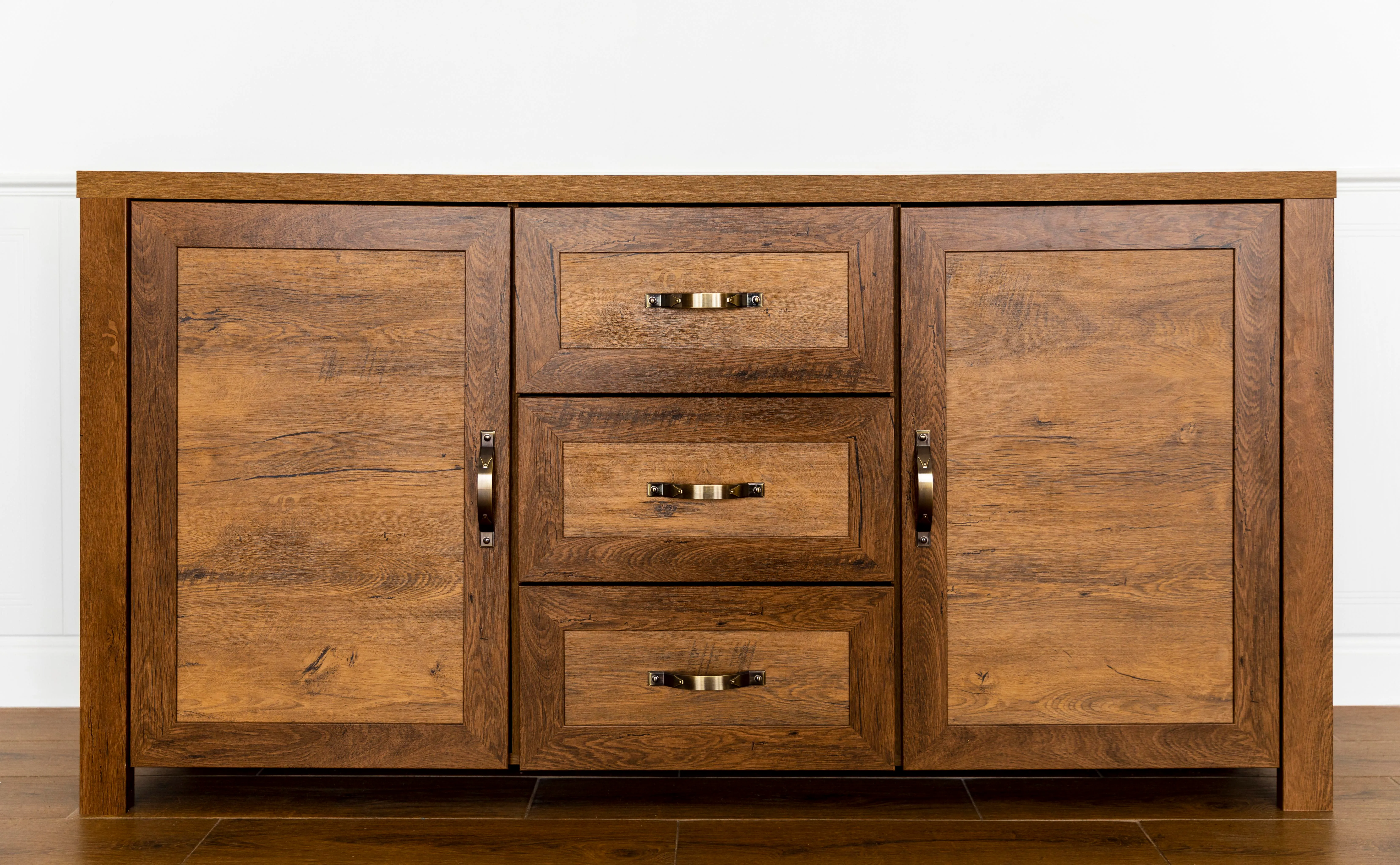
In contrast, thermofoil cabinets are a more budget-friendly option that provides a wide variety of designs and finishes. They are easier to maintain and clean, which can appeal to busy households or individuals looking for a practical solution. However, keep in mind that while they may cost less upfront, their durability may not match that of solid wood, particularly in high-traffic areas.
Thermofoil vs. Laminate
One of the main comparisons people make is between thermofoil and laminate materials. While both are synthetically created, the differences lie in their finishes and applications. Laminate offers a hard surface that can be more resistant to scratches and stains compared to thermofoil, making it a practical choice for those who prioritize durability. However, laminate can sometimes feel less authentic and may not provide the same warmth that thermofoil can achieve through various textures and colors.
=> Related Article: Laminate Cabinets: Pros and Cons
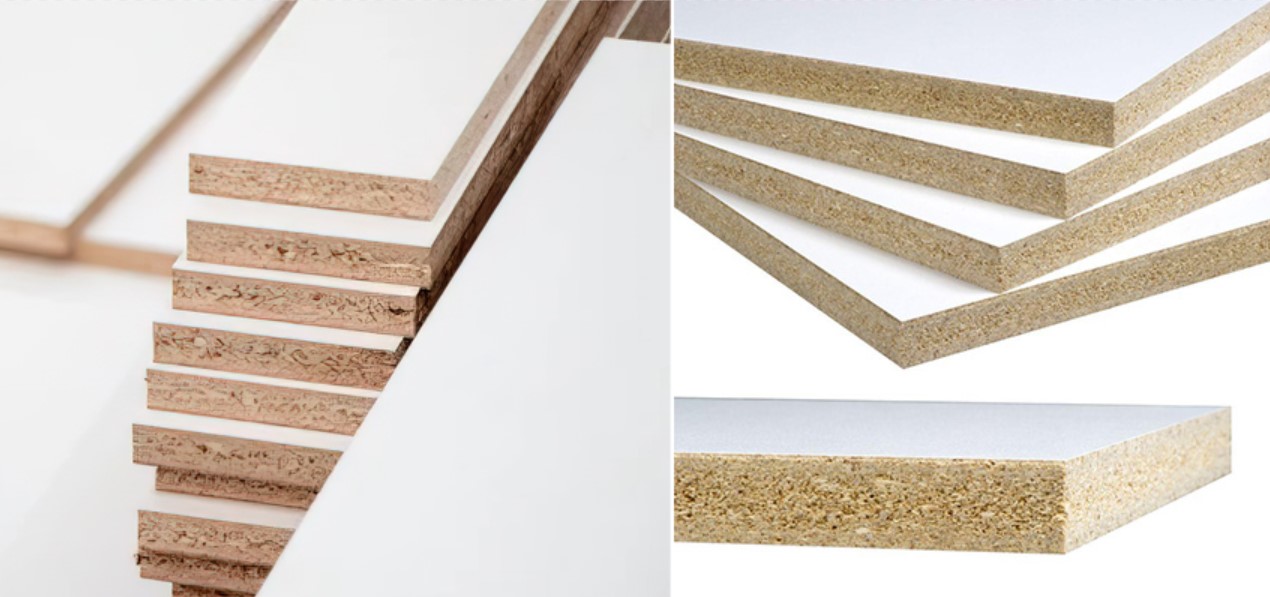
With laminate being an entirely flat surface, you may find that it lacks the depth and contour that thermofoil can offer. When deciding between the two, you should weigh the importance of durability against the aesthetic appeal you want in your space. If you favor a clean, modern look with practical durability, laminate may be the way to go. But if you are drawn to eclectic textures and colors, thermofoil cabinets can provide that extra touch of personality to your kitchen.
Thermofoil vs. Acrylic
Comparing thermofoil to acrylic reveals some distinct differences, particularly in the style and finish of the cabinets. Acrylic surfaces are typically high gloss and can provide a very contemporary, sleek appearance. However, they are generally more expensive than thermofoil options. If you are seeking a modern, reflective look, acrylic might catch your eye, but be aware that it can be susceptible to scratching, which may diminish its aesthetic over time.

Another point to consider is maintenance; while both options are relatively easy to clean, acrylic requires a bit more care to maintain its shiny finish. Despite being more cost-effective, thermofoil can accommodate a wide array of textures, colors, and styles, offering you more flexibility in terms of design. Understanding these differences allows you to make an informed choice based on your specific needs and preferences.
Are Thermofoil Cabinets Good?
Remodeling or refacing your cabinets? Thermofoil cabinets are a cheap and fantastic option. Cabinet doors come in a dizzying array of shapes and materials, as you may have noticed when perusing your options. In terms of price, appearance, and longevity, these materials are all different. Foam cabinets are an excellent option for homeowners seeking a broad variety of shapes and colors without take too much money.
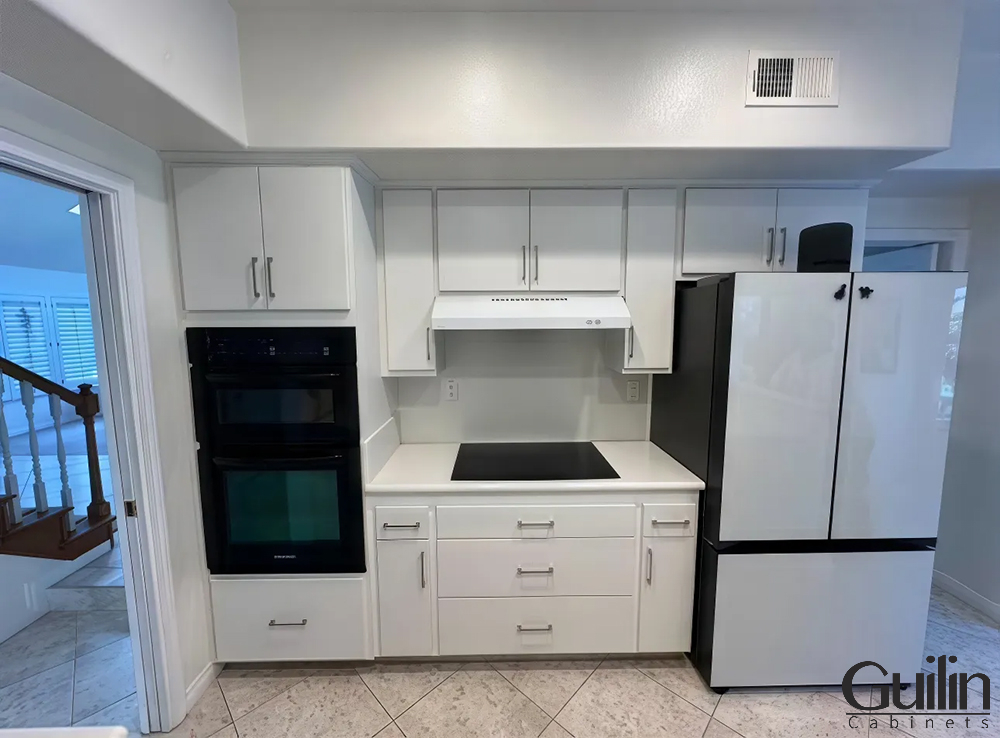
The versatility and affordability of thermofoil kitchen cabinets are well-known. “Are thermofoil cabinets good?” is a question that homeowners frequently ask. Since their introduction in the early 1900s, laminate cabinets have seen numerous improvements. Learn more about thermofoil cabinets and whether they’re a good fit for your home in this blog post!
Ready to Upgrade Your Kitchen Cabinets?
Whether you’re drawn to the sleek, budget-friendly appeal of thermofoil or the timeless beauty of natural wood, our experts at Guilin Cabinets are here to help you make the best choice for your home. Schedule a free design consultation today and bring your dream kitchen to life! 👉 Book Your Consultation Now
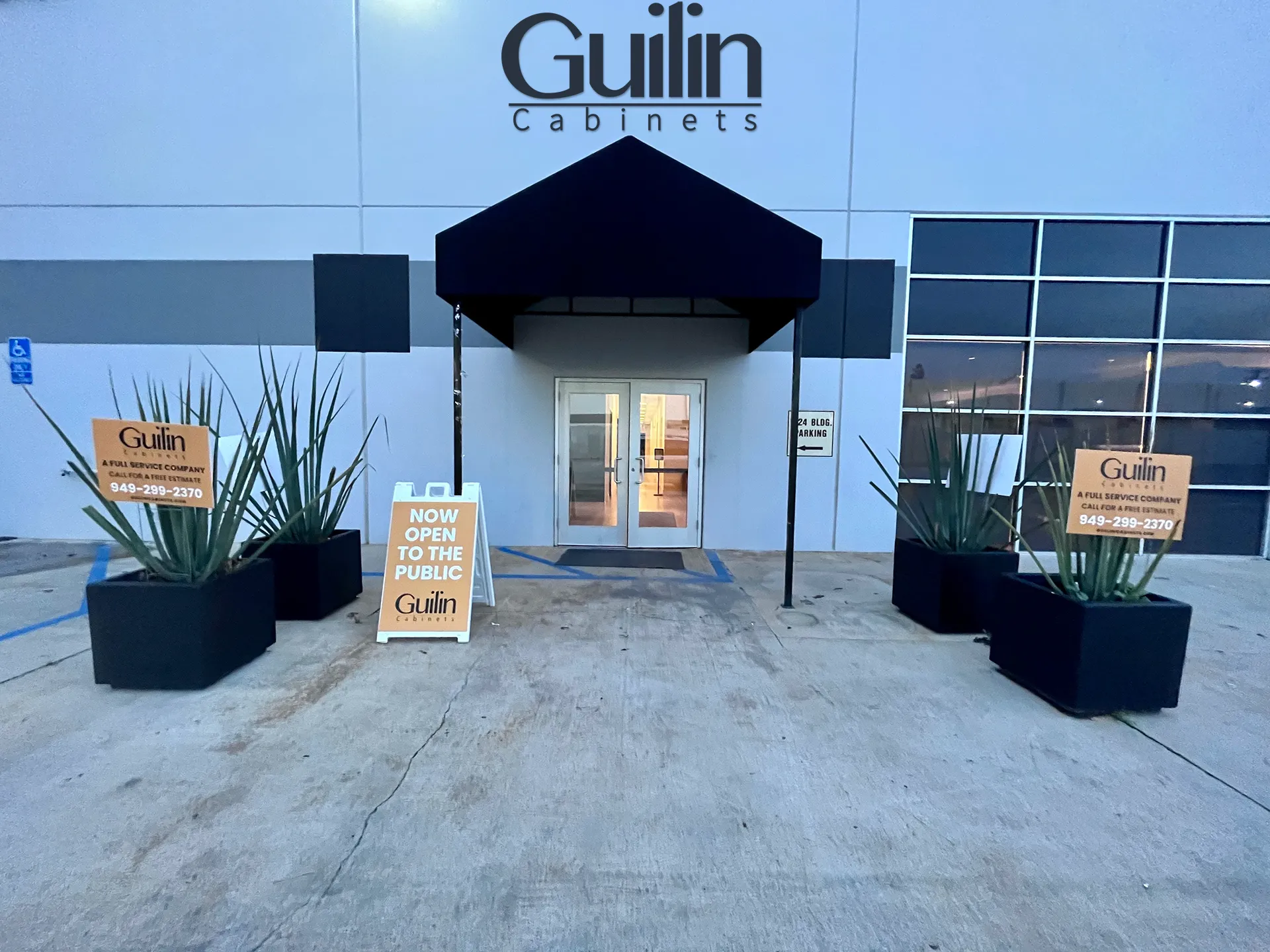
FAQS About – Pros and Cons of Thermofoil Wood Cabinets
What exactly are Thermofoil cabinets and what are they made of?
Thermofoil cabinets are made from a special kind of vinyl laminate that is heat-sealed around MDF wood. They are cost-effective and easy to maintain, but they lack the natural warmth and durability of solid wood. On the other hand, solid wood cabinets are strong, durable, and aesthetically pleasing, but they’re more expensive and require more maintenance. => Read more: MDF (Medium-Density Fiberboard) For Cabinets: Pros and Cons
What are the pros of using Thermofoil cabinets for your kitchen?
Thermofoil cabinets have several benefits, including being very easy to clean, being resistant to moisture, and being able to withstand temperature changes. They also come in a wide variety of colors and styles, so you can choose the perfect cabinets to match your kitchen decor.
Can Thermofoil cabinets be repaired if they are damaged?
Thermofoil cabinets can be difficult to repair if they are damaged. If the vinyl layer peels away from the MDF, it can be very difficult to fix or reattach the damaged area. This means that if your Thermofoil cabinets get damaged, you may need to replace them entirely.
How do Thermofoil cabinets compare to other types of cabinets, such as solid wood?
Thermofoil cabinets are less expensive than solid wood cabinets, but they are also less durable. Thermofoil cabinets, but are not as moisture-resistant and are more prone to warping or peeling. Ultimately, the choice of the cabinet will depend on your personal preferences and budget. => Read more: Medium-Density Fiberboard (MDF) For Cabinets: Pros and Cons
Are Thermofoil cabinets suitable for humid and wet areas such as bathrooms?
Thermofoil cabinets are good for areas with high humidity and moisture as they are moisture-resistant. However, if the monocoque is somehow damaged, water can get trapped underneath and cause the cabinet to split or warp. So, it’s best to have regular check-ups of your cabinets to avoid such issues.
What is the lifespan of Thermofoil cabinets?
The lifespan of Thermofoil cabinets varies based on factors such as usage, maintenance, and quality of construction, among other factors. In general, Thermofoil cabinets can last between 10-20 years, depending on how well they are taken care of over time. Regular cleaning and care will extend the longevity of your Thermofoil cabinets.


